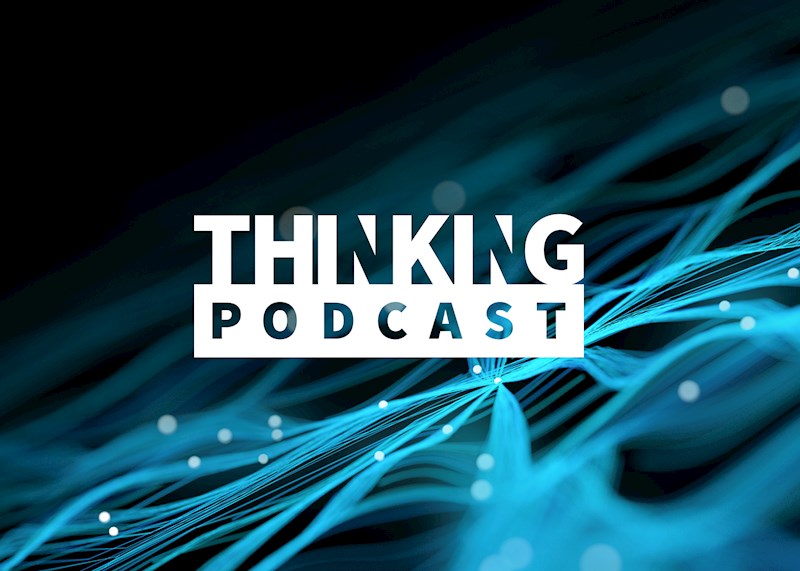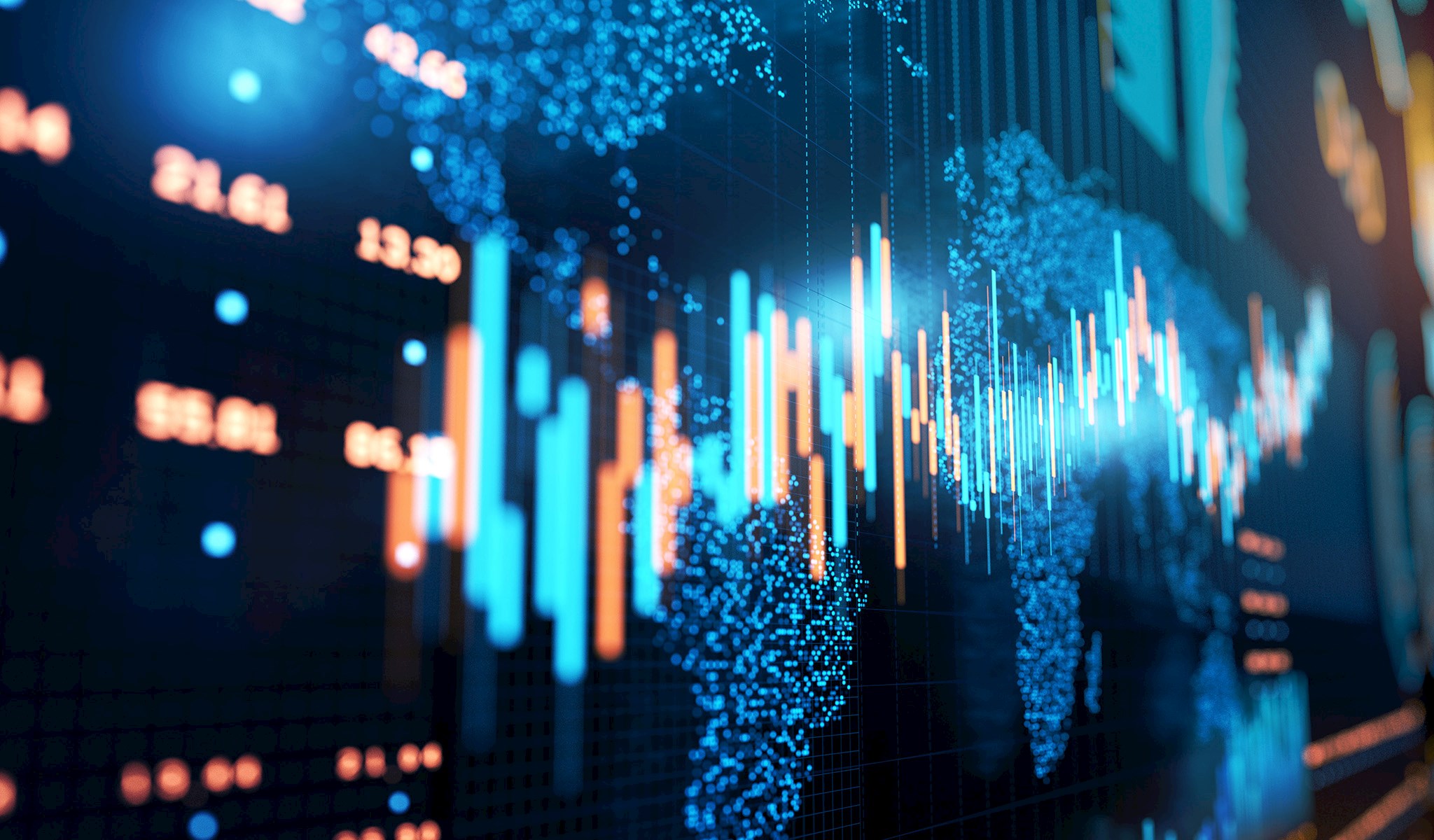William Blair macro analyst Richard de Chazal unpacks the latest on global tariffs, inflation pressures, recession risks, and why smidcap stocks might be poised for a comeback in a shifting economic landscape.
Subscribe here: Spotify | Apple Podcasts | Amazon Audible
Podcast Transcript
Chris
Hey, everybody. Today is May 28th, 2025. After a turbulent few weeks of shifting trade policy, market recalibration and mixed economic signals, we're back to unpack what it all means. Joining me to break it all down is William Blair macro analyst Richard de Chazal, who's been tracking every twist in the data and policy landscape.
Richard, welcome back. Great to have you with us again.
0:45
Richard
Good to be back.
00:46
Chris
Let's start with, with an update on the tariff situation. So, you know, we've seen some significant developments in the past month, especially recently, including the U.S. and U.K. deal, as well as as some progress in, in China. Can you just give an overview of what's happening?
01:02
Richard
Sure. Yeah, there's. There's a lot. A lot of change, actually. I think maybe it's worth just thinking back of what things looked like just over a month ago, which was, if you remember, April 2nd in the White House rose garden when Trump, you know, lifted that plasterboard of reciprocal tariffs and then the market over the next four days basically fell by like 12%.
So all we had then was just kind of complete and utter noise. And nobody had a clue of really how serious we were or he was. And you know, what the impact would be. And I'm hoping now we kind of pass that point in this kind of ongoing trade war where we're starting to get a little bit, sort of more I guess, cautiously optimistic, about what's happening.
And I think back then it was all uncertainty and no risk. And we talked about the difference between the two and our uncertainty. You know, liquidity drives up, dries up. No one wants to sort of be the counterparty to your trade. What they want is, is, is quantifiable risk that they can hedge and make markets. And that's what drives, liquidity and so what we've seen since then has been a number of climb downs from the president. On April 9th, we saw that the bond market was starting to get a little bit wobbly. He climbed down on, on extending those tariffs for 90 days.
Then he also backed off on the specific tariffs for some industries like semiconductors and iPhones and, and stuff like that.
And then he also would, you know, said he was listening to, the, the rhetoric from some of the CEOs of the big retail giants who were talking to us, so I think what, what we've seen since then, as well as a number of other episodes, is that he's he's kind of given us his tell. I guess you say in poker, his reveal. He showed us a little bit of his hand and that he's willing to make concessions. He's listening to advice. You know, there are there are guardrails kind of around his actions. So it's not his goal to tank the economy and financial markets. So I think that has been, helpful for the markets. And I think we're getting a little a little less noise, a little bit more signal into into the mix.
So we can't get complacent here. We know Trump loves instability and keeping people guessing, but it's it's progress. And then in terms of the actual deals, you know, we've seen the first one off the block was a deal in principle with, with the UK where tariffs have come down, but there's still left with this baseline 10% tariff.
And I think the messaging here for future deals going forward is that that 10% baseline really is going to be the sticky non-movable tariff. And then the reciprocal tariffs really were sort of the shock and awe, the negotiating factor. What's bringing people to the table or countries to the table to try and negotiate those, those down.
And what we're sort of ending up with is the ball sort of moved a little bit more in Trump's direction, but not, you know, more than what it was before the this whole thing started. But but not back to where it was at when the whole thing started, if you see what I mean. And then, you know, we've seen other countries like India that they've been sort of saying they'd like to be happy to reduce their tariffs to zero.
But I think most importantly is, is really done with China. We had, Treasury Secretary Bessent and, USTR Jameson Greer meeting with China representatives in Geneva a couple of weeks ago. Talks there seemed to have been very constructive. The House, if you look on the on the website of the White House, they're actually calling it a deal, although it seems more like kind of agreement in principle, or at least maybe they've sort of decided that they're all kind of on the same page rather than an actual deal.
But what we did see is that those, those 145% reciprocal tariffs, Trump said, well, they can come down to 80%. And then Bessent has told us that they're actually going to be closer to to 30%. And again, that's sort of paused until August. And then the Chinese reciprocated by lowering their tariffs from 125% to to 10%.
And then the last big thing, which kind of flew under the radar over the weekend was because it was the bank holiday, Memorial Day weekend. And it happened kind of so fast, was that Trump wasn't very satisfied, seemingly with the way negotiations were going with the EU. And he said, well, we're going to slap 50% tariffs on there. And then the EU seemed to have quite quickly acquiesced and gotten a little bit more serious. And then those 50%, tariffs were were dropped or pause quite quickly until early July.
So again the threats are still there. These tariffs could come back in in July or August. Which would obviously be more volatility inducing. But what we've seen is, is flexibility, a willingness to, to make concessions and make deals from both sides. So that's constructive.
06:58
Chris
Let's talk a little bit about tariffs and their impact on inflation. You know, I know we've we've talked a lot about tariffs. You talked about a whole lot about inflation. And you know now we're starting to get or we're beginning to hear from some major retailers about price increases that are. I guess you could say a direct result. Can you talk a bit about the correlation between tariffs, inflation and pricing and what we could potentially expect in the near future?
07:21
Richard
I mean, we're not seeing a ton of that just yet. You know, I think one thing to remember is that because, you know, these tariffs were announced ahead of time and companies and households were expecting them, we did have a little bit of pull forward and inventory building to kind of front man those tariffs. So that kind of delays any pricing increase until that sort of destocking has done.
Then we had this 90 day pause on China. I was listening to some companies and and one of them, the CEO, was saying he was waiting for that, waiting for that, waiting for that. And then as soon as he heard that announcement, like, bang, he he threw in a bunch of new orders, for Chinese goods to, to restock his inventories.
But as you mentioned. Yeah, I mean, one significant development that I think was a little bit shocking was one very large global retailer, U.S. retailer, did say that they are going to be passing along their price increases and they're going to be doing it basically as soon as now, we're talking now.
And that that didn't go down well with Trump who said he's forced them to eat those price increases. So we'll see what happens there. And I think since then, a lot of companies have kind of clammed up a little bit there being a little bit more careful in how they're couching their comments around pricing, calling it sort of more holistic pricing and that kind of stuff.
So that's interesting. But, and again, we're in sort of a data shortage period. We have to wait till the official data comes in. If we look at sort of some real time measures of inflation, like if you look on the website of Truflation and they, they, they show sort of daily inflation measures and on on their measure since May 1st when their measure of inflation was 1.35%. That's moved up to 2.08% today. So prices are kind of moving up. And I think we should expect them to, to move up. Exactly how much, I think it's interesting there was there was good paper by the San Francisco Fed, last week. I think they put an interesting note out where they were basically saying that they broke down the consumers consumption basket and said, really, only only 9% of that consumption basket is made up of imported goods.
So if you think about what consumers spend on, you know, the biggest three are shelter, transport and and food in that order and that amounts to about 62% of consumption. And just about all of that, with the exception of automobiles and transportation, are more sort of domestic product. So I think something like 85% of food bought in the US is or maybe 90% actually is produced domestically anyway, so this paper said basically, if you plug in that tariff rate of 25% on that 9% basket, and that was sort of fully passed through to prices, that would result in an extra 2.2% on inflation, which is pretty high.
The corporate sector, they calculate that this foreign share of consumption is about 38%. So obviously much higher. And then if you fully pass through those, you get price increases on a 25% tariff of 9.6%. So again, very, very high. I'd say those are, those are again too high. I think the effective tariff rate now looks like it's going to be probably about 15%. Maybe, maybe a touch less. I don't think there's going to be a full pass through of those prices. I think some will get eaten by by the retailer, by, you know, the transporter and various entities along that, that supply chain.
And then, you know, growth slows a bit. You get a bit of layoffs. You're probably looking at price increases, closer to to 1%, which is definitely not nothing either. But I think it's more, more manageable. And then the other thing I think that we tend to forget is that, you know, prices for services are still the big chunk of the inflation basket, and we haven't really been talking about those in a while. But remember those those shelter prices are still coming down. So that's going to be unhelpful offset going forward.
So I think the market is, is certainly a little wary of inflation and is definitely right to be. But it's it's not freaking out about it in light of the progress that we, we're sort of making on tariffs.
12:18
Chris
Sure. Okay.
Moving on to the current economic situation. Or I guess I should say, you know, the hard data versus soft data situation, but what are the probabilities of a recession based on the latest data that you're seeing?
12:32
Richard
Again, I think the problem here, a bit like the Covid is we still haven't had all that much hard data. So we're kind of scraping around looking for for good data. We had the April employment report that was pretty strong. But remember that was taken, in the week of the 12th to the 16th. So still very early on in the in the process and not much of a tariff impact there.
And then the other piece of hard data we had was the retail sales data for April. That was that was softer, but I see a little bit mix of that. So the control group so the data that's used for the GDP portion of consumption, that fell by 0.2%. What was interesting was we actually saw an increase of 1.2% in spending at restaurants and bars.
So that's pretty discretionary stuff. It’s clearly not suggesting that consumers are really hurting all that much.
13:32
Chris
Right. So people are still feeling comfortable enough to eat out, which is interesting. Yeah.
13:36
Richard
Exactly. Yeah. And I think remember I mean, oil prices have come down about 20% over the last year. So that's that's a tax cut for the for corporates and individuals.
And then you know, as we're thinking about, you know, the whole recession thing, the labor market is, is pretty solid. Remember we had and we talked about them a while ago was all these fears about DOGE, about deportation? None of that has really materialized in, in a big way. And then companies aren't being, you know, they're not quick to, to lay off workers, that they're hoarding labor because they know this is a structurally tight labor market. So we've seen job openings have come down, have wanted ads, have kind of dried up. But companies, you know, they're not laying off workers either. And we've seen that continue in continuously in the weekly initial jobless claims. So you know, on top of that consumer balance sheets are in good shape.
So my point is that there's resilience there. Like I think consumers are they're well placed to deal with any shock if we are heading into to a slowdown. And I think what we've seen is as the kind of risks around the reciprocal tariffs and all that kind of stuff has sort of calmed down. Economists have been reducing their, recession risk probabilities quite significantly.
15:03
Chris
Yeah. It seems as though consumer confidence has kind of tracked in a more positive way as well. You know, the most recent report, there's been a notable rebound rising, what was it so, rising to 98 from 85.7 in April?
What do you think is driving the improvement? Is it? I'm assuming it's similar. In terms of what we just talked about and, how will it impact the broader economy?
15:30
Richard
I think it's all based on the improvement in the sort of discourse around, the tariffs. I think what's interesting and again, doesn't get a lot of airtime is that if you look at that consumer confidence data that's made up of two buckets, expectations and present situation. And what we've seen over the last few months is pretty much all of the decline in consumer confidence in the aggregate measure has been in the expectations component and not the present situation component.
So consumers are saying like, you know, actually things aren't too bad today. You know, I’ve still got my job. Prices haven't gone up all that much. I'm still feeling pretty good about things. But while these tariffs in the pipeline, you know, that's that's going to really rock my world in the next six months or so. And that's that's going to be pretty grim.
So it's all been in the expectation. So now if we're easing off on those expected future tariffs then that expectation component is going to start to improve of that. And I think that's what we saw in the May consumer confidence report this week. And I think that's helpful because we've had this sort of feeling, if you do, you know, what the charts have looked at is, is the, the change in personal consumption spending versus, consumer expectations. And there's this quite a tight relationship. And there and at the moment, it looks like you're sort of in this wild coyote moment where the soft data has plunged, expectations have plunged, and you're just waiting for that hard data of consumer spending to kind of plunge with it. And I think that, doesn't seem to be quite as, as likely at this point.
I think, you know, the tariffs coming down, which will have a bit of a soft patch, but I think consumers can get through.
17:31
Chris
Okay. All right. So lastly, let's talk a bit about markets. I know that you recently, you've written a bit about smidcaps. What makes them a favorable investment right now in the current economic climate?
17:45
Richard
Well, they definitely haven't been for a while now. I think it's been a tough slog if you are a smidcap, small or mid-cap, fund manager for the last few years when you've been watching just the the Mega Caps in the Mag 7, shoot higher and higher and higher.
But I think things are changing. They're changing slowly. We, you know, it's my view that we've had these kind of tectonic plates that had been shifting in, in a number of different areas, and I'd be surprised if we didn't start to see the SMID Caps doing a little bit better in the coming years, as that kind of mix shift takes place. And I think how we can think about is maybe what were the biggest factors that drove the current large cap cycle in the first place?
I think I think the first was this sort of hyper globalization where the largest companies were able to get obviously more access to new global markets. And then they were able to combine that with, you know, more brand power, that gets amplified with social media. Then you have these sort of powerful network effects, and all of that then gets sort of amplified again with innovation.
And we've had this sort of winner take all superstar type market environment where it's just really, really hard for smaller companies to to compete. And then on top of that, we've had a whole slew of regulation, which is being a great moat for those large cap companies. And then in the economic environment, we have kind of stable low inflation and very low interest rates.
And that led to this sustained negative correlation between stocks and bonds, which is important, but which is now flipped. And we talked about that, in the past, and then we have the whole growth of private equity again, because of those very low interest rates and low inflation. And that was kind of dissuaded many small companies from going public.
So in, in I guess the old days, they used to, you know, the stock market, the S&P 600 or the Russell 2000 was kind of an incubator for smaller growth companies. And you haven't really had that happen this time around because it kind of been sucked up by the by the private equity firms, this time around.
And then lastly, I think the last thing that I think quite important driver of that large cap was this sort of massive surge in passive investment, which I think by definition is momentum driven and valuation agnostic. Because these flows have been so large, they, they, they just naturally gravitate towards those largest cap companies.
And I think what's changed or what's changing, you know, has been A, that stop on correlation is, is now causative again. And I think that is driving this kind of important need for greater diversification across your portfolio. So if you can't rely on the negative correlation of bonds to give you that insurance, you have to get that somewhere else. And that means looking across a range of sectors, assets, but also looking down the size scale towards the smidcaps which people have basically ignored for, for years.
And then the other thing I'd say is that, you know, there's a lot of good companies, there are good quality companies that are basically ignored. Their valuations are hugely attractive. The relative PE for the for the SMIDs is as attractive today as it was in the late 1990s, when at the time they were largely ignored. And that was just before a long outperformance period.
And what that valuation, does is it gives you that sort of margin of safety. So, you know, these stocks are far from being priced to perfection. They they've got actually a lot of bad news already, priced into them. And I don't think they're being given that low valuation because people think these are really necessarily, these are really terrible companies. I think it's because, you know, other factors have been more influential.
So it reminds me a little bit of, you know, the famous analogy of John Mayer Keynes back in, 1936, when he said that investing is a lot like picking the winner of a beauty contest. It's not who you think the most beautiful person is, it's who you think everyone else is going to think the most beautiful person is.
22:54
Chris
I've never heard that quote. That's interesting.
22:57
Richard
Yeah, yeah. And not everyone else today is kind of also the big passive investment flows. And I think if we're moving away from the effectiveness of this sort of classic 60, 40 portfolios, and away from, fully passive and maybe a little bit more active. So again, that that sort of pendulum may be starting to swing back in the other direction. I think that's going to be quite, beneficial for, for these smidcap stocks.
You know, they also have great earnings. So if we look at forward earnings, estimates, they're significantly higher. And then, you know, we can maybe think that Trump is going to be helpful here. So if he actually starts to come through with some of the deregulation that he's talked so much about, again, that would be very helpful in reducing that moat, which has been so powerful for these larger cap companies.
So I think I think it's exciting. I think the economic and investment landscape is is changing. It probably means a continuation. Some more volatility, some more uncertainty. But I think that requires a little bit more diversification. And I think ultimately, it's going to end up being a much healthier environment for the market and for the broader economy as a whole.
24:25
Chris
Richard, unfortunately, that's all the time we have for today. But we will be back very soon. Obviously, we have our Growth Conference, coming up next week. I'm sure we'll talk a little bit about that next month, along with whatever else has happened over the course of the next few weeks. So thanks for taking time to be with us, as always and, we'll talk soon.



